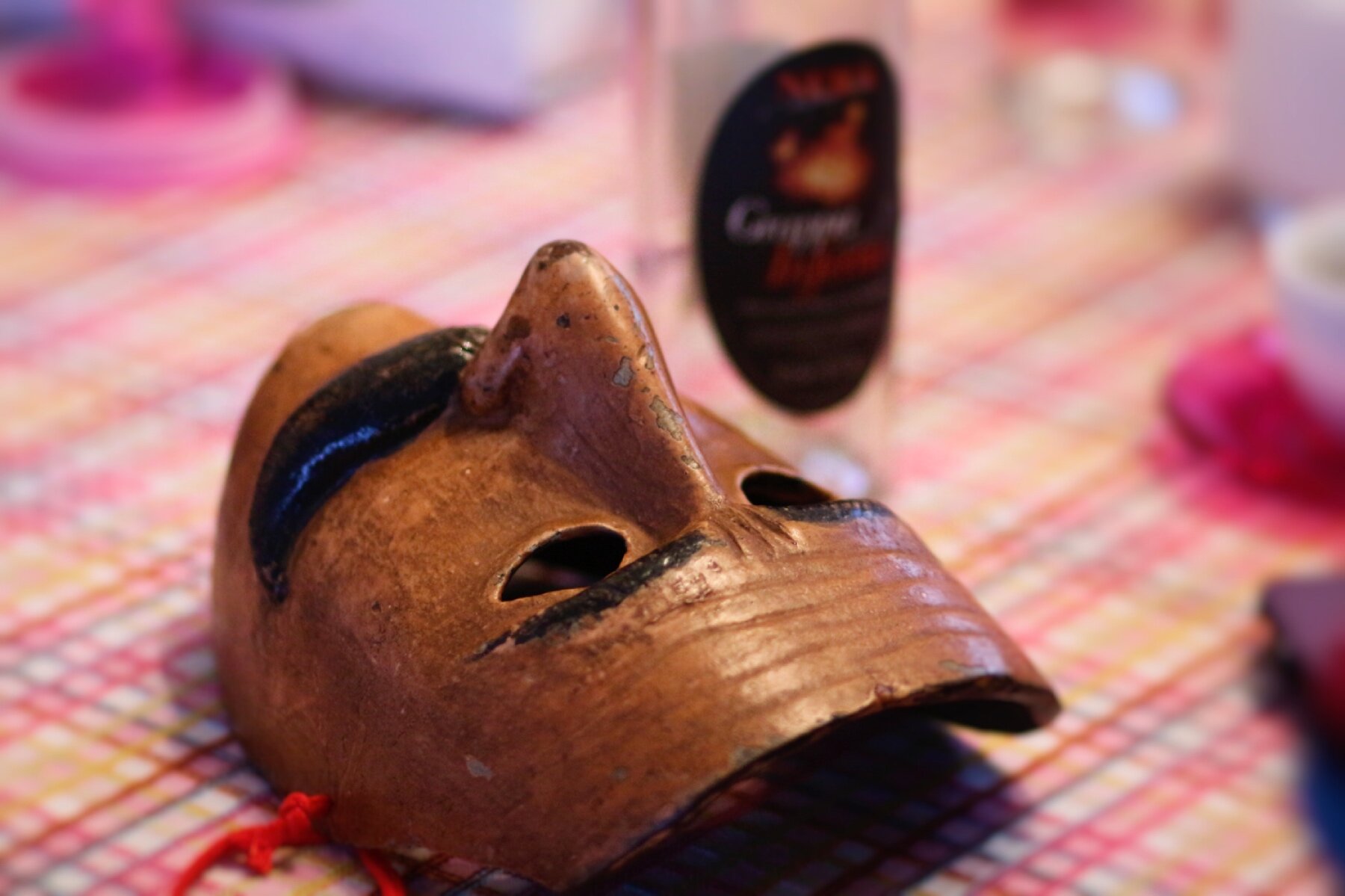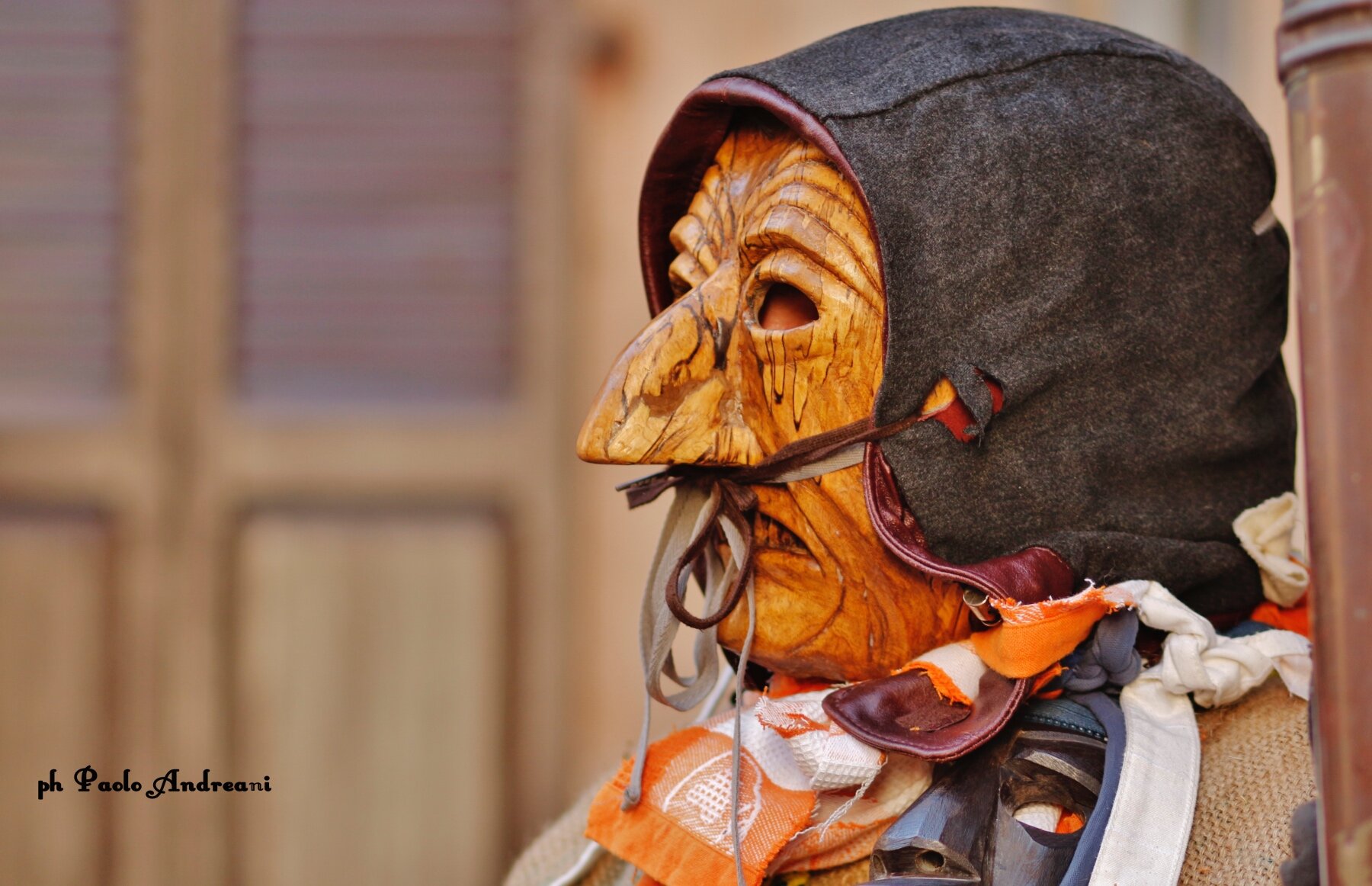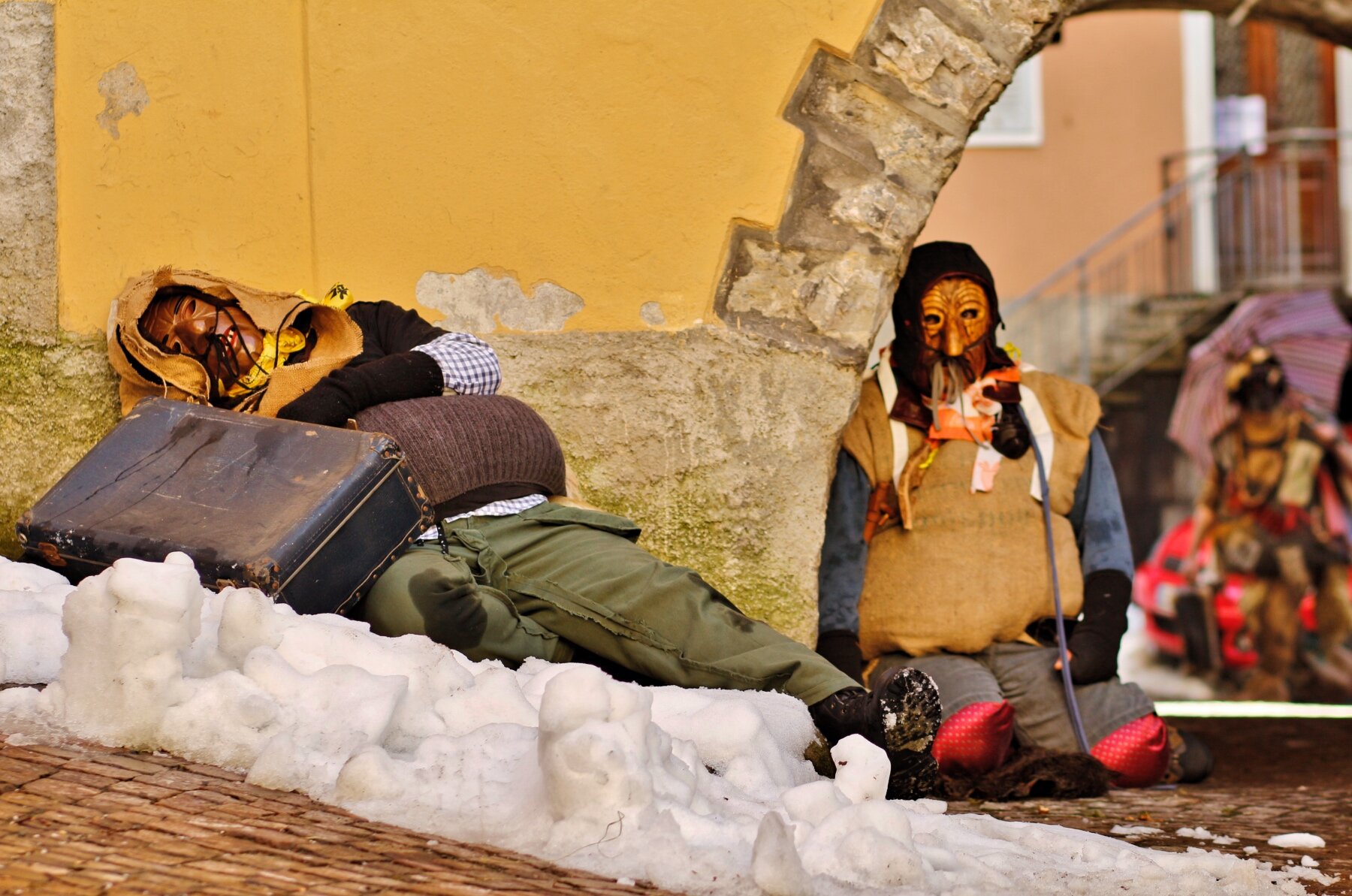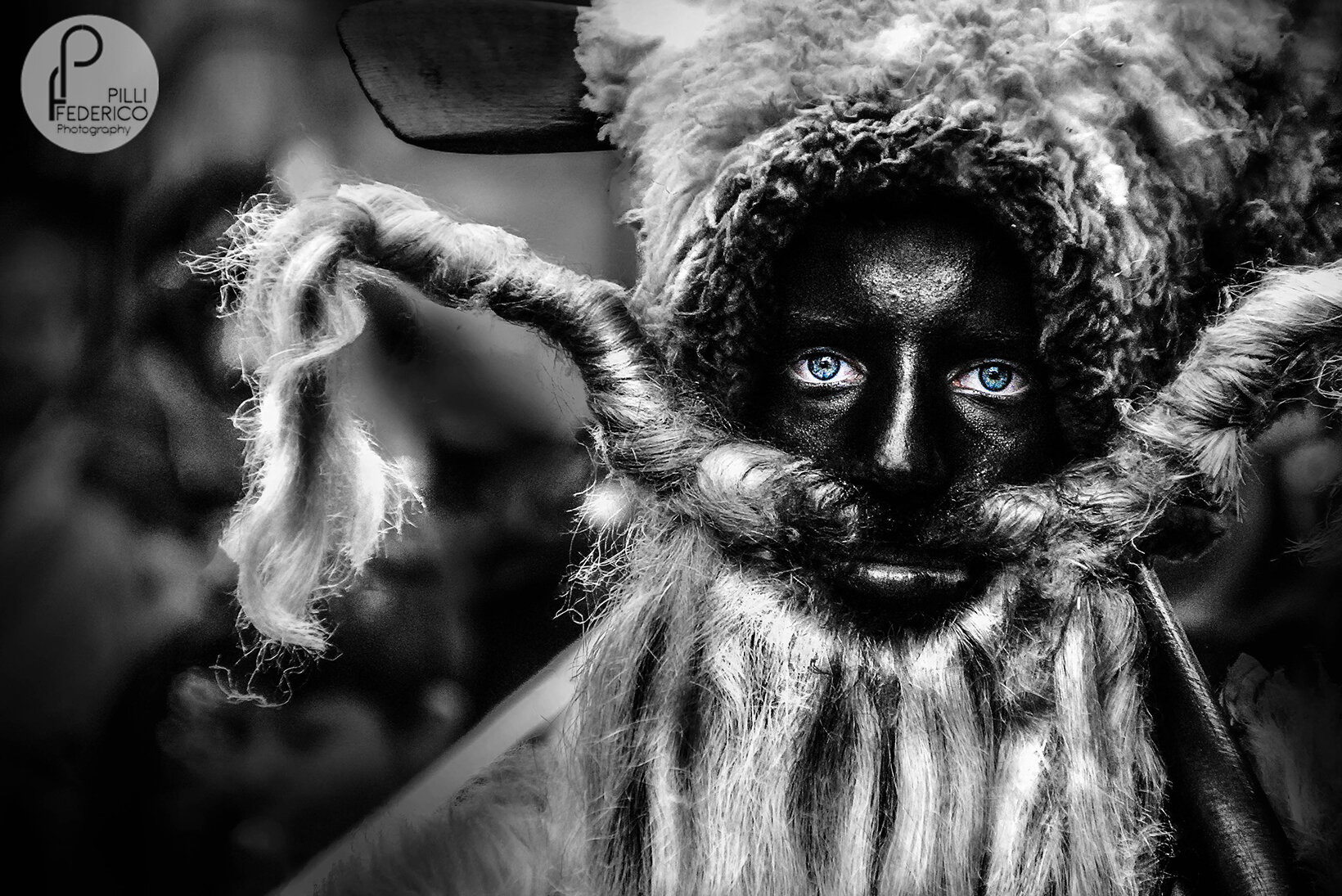The Origins of Schignano Carnival: Between Melancholy, Primitive Myths And Local History
Image by Ivano Negri
Some of you, for a long series of more than embraceable reasons, probably don’t like at all the traditional carnivals: confetti in your hair, sparklers, chariots with horrible masks inspired by politicians… if you believe that there isn’t so much to laugh for in such a (often vulgar) mess, well, we’re on your side.
But - yes, there’s always a but - on Lake Como we have a carnival that will make you change your mind about this tradition. We’re talking about Schignano Carnival, a quirk mix of history, primitive myths, and local legends. Due to its spontaneity and lack of rules, we’d say this carnival is more like an archaic, surreal, somehow hallucinated ritual.
The fun fact is that in this event, in contrast to what happens in most of the parades around the world, there’s room for one of the purest and most poetic feelings ever: melancholy. That’s why this carnival is so emotional and terribly engaging.
In this post we’ll jump with you into the symbolic ecosystem of Schignano Carnival, so that you can attend this unique event with its subtle meanings clear in your mind.
Before that, a little premise about Schignano: we are in Valle Intelvi, at a 20 minutes drive from Argegno, western shore of Lake Como. Schignano, with its less than 900 inhabitants, is definitely a remote destination quite far from the most popular touristic routes of the area, and that’s probably why its ancient traditions have been perfectly preserved over time. Time has stopped in this tiny village nestled among forests and alpine pastures: the carnival keeps being celebrated in the same way year over year, from generation to generation, with its histrionic soul that transforms the alleys of the village into a little, big stage.
Ready to plunge into this surreal microcosm?
Image by Paolo Andreani
THE CARNIVAL IN A NUTSHELL: EMIGRATION AND WOODEN MASKS
“A great emigration necessarily implies unhappiness.”
Thomas Malthus
Schignano carnival basically stages the atavistic rivalry between the Bèi (literally the beautiful) and the Brüt (the ugly), i.e. the rich and the poor. Both are emigrants: the difference is that the Bèi have made their fortune abroad (indeed they are elegantly dressed), whereas the Brùt have failed, that’s why they get drunk and they sadly wander around the village with an empty leather suitcase.
This is nothing more than the re-enactment of the time when, in spring, precisely on the day after the Shrove Tuesday, the men of the village used to leave their family to emigrate across borders in search of luck. They left with an empty suitcase, hoping to fill it before their return in December. Schignano, being on the boundary with Switzerland, has alway been a poor village and its inhabitants have always emigrated (one of them was on the Titanic: you can still see his tombstone in the village’s cemetery).
That’s why, in the end, this carnival has a subtle melancholic shade: it’s always been the way local families used to say goodbye to their fathers, husbands, sons, brothers. And - you’ll agree with us - there’s really nothing happy in a goodbye. On Shrade Tuesday, at midnight, a huge bonfire declares the end of the party and the inevitable, sad departure of all emigrants.
The symbol of Schignano Carnival are the hand-carved wooden masks: local artisans, part of the association of artists La M.A.S.CH.E.R.A di Schignano (in turn part of the network of masks creators of the Alpine region), sculpt them from the roots of walnut trees (more rarely from service trees or tilias). The oldest mask dates back to 200 years ago!
Image by Paolo Andreani
These masks are more than sculptures, because the manufacturing is both internal and external. Each mask has its own expression and name, to be able to discern them. Someone sees a similarity with Peruvian wooden masks.
Italian singer Davide Van De Sfroos has dedicated a song to Schignano carnival, where he perfectly summarizes the dramatic allure of these masks:
“…this mask that hides me
I keep it strong, I never give it up,
The only face I have is this one
As I don’t know where the other one is
No mask changes the face
Even if there’s a man crying underneath”
That’s what we were saying at the beginning of this article: Schignano Carnival is surreal, mad, instinctual, funny as only a party without rules can be; but behind the masks, it conceals a bit of melancholy.
Image by Paolo Andreani
CHARACTERS AND ALLEGORIES
The interesting fact about this carnival is that there aren’t hundreds of characters: the main ones are just six. Let’s have a quick look at each of them.
The Brüt (The Ugly)
Image by Paolo Andreani
These represent the poor, the ones living by agriculture and pastoralism, the emigrants who haven’t managed to make fortune abroad. They are covered with rags and they wander - often running - around the street of the village with their clumsy cowbells (literally “cioche”) and work tools (pack baskets, accessories of stonecutters, masons, cobblers).
What they do is basically to create havoc among the spectators: they "kidnap" the girls, they throw animal skinned skins to people, they lavish caresses with dirty hands. They wearily drag an empty suitcase (symbol of poverty) and often a ladder, which represents the effort of carving out a place in society.
Image by Paolo Andreani
The meaning of these spites is the anger for the life of hardships they make, the labors, the sacrifices that never lead to the desired results. When you see them sitting (or laid down) in a corner, alone, they are dealing with their anger for not having made it.
Image by Lakeside Real Estate
Image by Paolo Andreani
The Brüt are all men, and generally young: they need breath and legs to run all day!
In an interview, a local guy said that he has always played the role of the Brüt in the carnival, “because I can feel it”. Brüts are mad as hell, they drink grappa and they run around the village like devils: it’s not for everyone.
The Bèi (aka The Mascarùn)
These are the beautiful, the lucky emigrants, the ones who did it.
They wear colorful dresses with lace, feathers, fans, flashy jewels, umbrellas, big hats with flowers, sweet little bells (“bronze”, made of bronze) and other useless accessories that represent their extreme desire of display. Their colorful outfit is also a reminder of the Spanish domination, hence the mockery that is typical of the dominated population.
Image by Paolo Andreani
They walk with apparent elegance, with their huge belly (symbol of opulence), and they don’t care at all at the harms caused by the Brüt: indifference, proud look and self-satisfaction are their distinctive marks.
The Bèi embody a conceited humanity all focused on itself; well, now you start understanding why the Brüt are so pissed off.
Contrary to the Brüt’s mask, which has a distorted shape, the Bèi’s one boasts elegant and symmetrical lines.
The Ciocia
This is the only character of the whole carnival allowed to talk (in local dialect, it goes without saying). One of the best features of Schignano Carnival is indeed the fact that no character is allowed to talk, so it’s basically a silent party, primitive and unpolished: the only steady sound is the one of the bells.
The Ciocia is a man dressed as a woman with the face covered with soot. She’s the Mascarùn’s wife/slave: he drags her with a rope - a possible reference to women’s condition of past years. The Ciocia (rightly) complains of her husband, who left her alone to seek fortune abroad, where he’s most probably betrayed her: a tale as old as time. We’re on your side, Ciocia.
The Sapeur
These mysterious characters lead the procession on the first Saturday of Carnival and on Shrove Tuesday.
Image by Federico Pilli
The Sapeur are quite disturbing, because they’re completely covered with sheepskin, their skin is painted in black, and they hold a terrible axe in their hands. Some fans of Game of Thrones will probably find an analogy with the brutes. They embody the most primitive, savage, ritual soul of this carnival.
Image by Paolo Andreani
A theory states that they represent the first colonizers of Valle Intelvi (old authorities of peasents), who chopped down a large part of the forests to settle down the first villages; another current of thought identifies in them the outposts of Napoleon’s army.
The Sigurtà
The Sigurtà and the two Sapeur - Image by Paolo Andreani
This is the icon of authority. He has the duty to check who is under each mask. This is linked to local history: until the ‘60s, you needed to declare yourself to the police if you wanted to wear a carnival mask. This was required to prevent smuggling, a deeply rooted practice in the area.
The Carlisepp (Ul Zep)
“Ul Zep” is the symbol of the carnival itself. It’s basically a puppet that is hung on a window in the main square of the village (Piazza San Giovanni). On Shrove Tuesday, it’s replaced by a “living” Carlisepp: a guy among the group of those turning 18 in the current year. The young boy - wearing the same outfit of the puppet - is bind on a ladder by his peers: his destination is the bonfire! However, once close to the piazza, the guy frees himself from the ladder and starts an exciting escape to survive. The final bonfire of the puppet marks the end of the carnival.
18 y.o. guys carrying the Zèp - Image by Paolo Andreani
So, why the eighteen-years-old guys have such an important role in the event? That’s because the beginning of the carnival in Schignano has always coincided, in the past, with the end of the “vegéta”, i.e. the greeting of the eighteen-year-olds before leaving as soldiers. These guys on the afternoon of January 5 wander around the country in military clothes followed by the "Fughèta" (the local band) and a long procession of relatives and friends. Then, after an evening of celebrations and "munfrine" (the typical dances of Schignano), the carnival officially starts at midnight.
Zèp’s clothing “ceremony” - Image by Paolo Andreani
CONCLUSIONS
Attending this carnival is an experience you should try at least once, to fully plunge yourself in the culture of the community of Schignano; a community that resists, and strives for preserving its century-old tradition.
The authenticity of this carnival, its desire for freedom, its undisguised irreverence is something you’ll hardly forget. Because sometimes it’s just good to undermine the ordinary and indulge at euphoria. Even for one night only.
“And tonight we no longer have a language
We no longer have a face
We no longer have a job
Just a dress, a bottle
And this wooden mask.”
(D. Van De Sfroos)
Image by Paolo Andreani
If you’d like to read more about this special carnival, we suggest you to have a look at photographer Mattia Vacca’s work: an intimate reportage with surreal, dreamlike photos.
Article by Laura Zanotta
B/w header image by Federico Pilli
Are you planning a trip to Lake Como for your house hunting and you need helpful tips to get around? Owning a property near the spots described in this article is your dream?



















